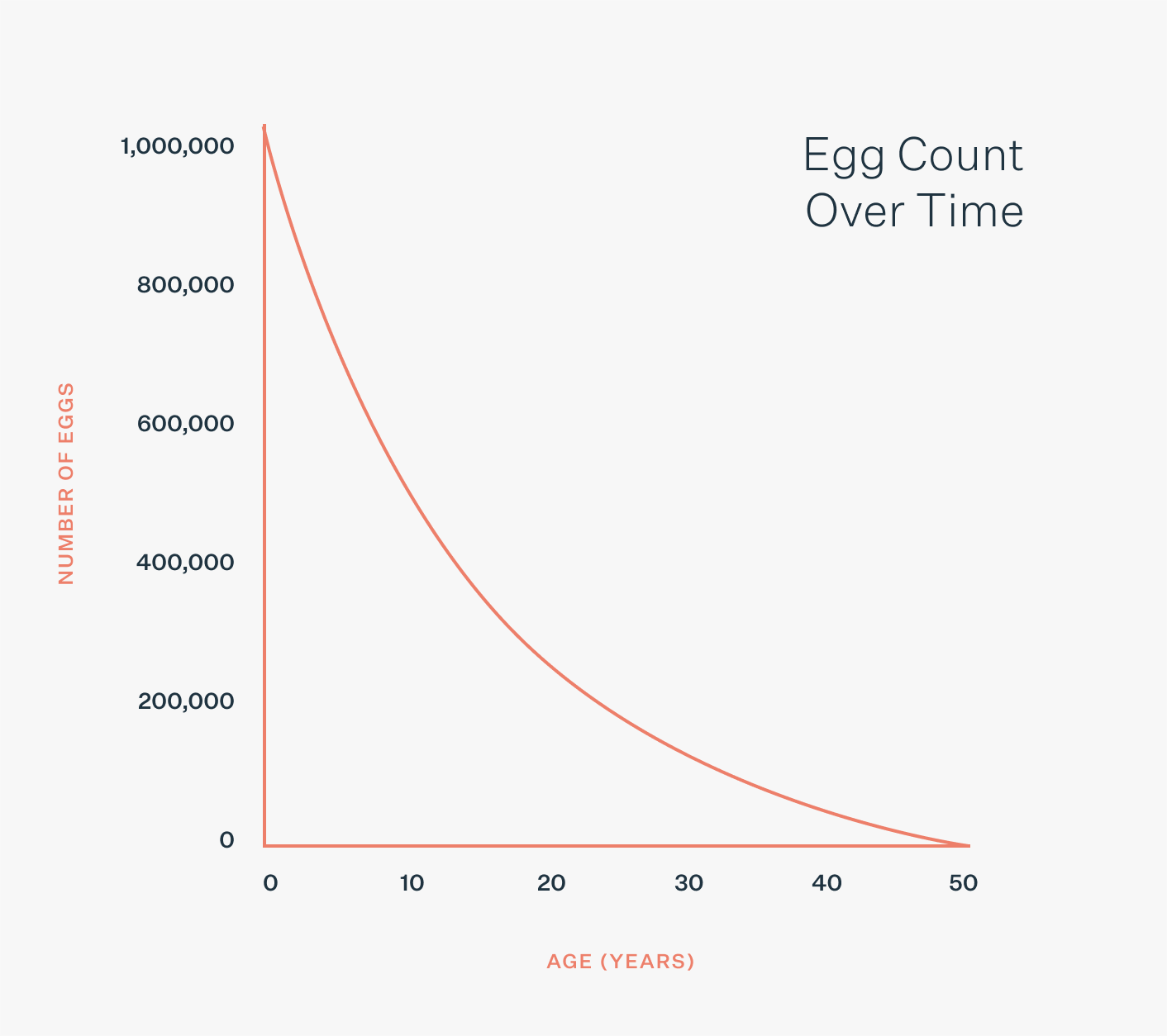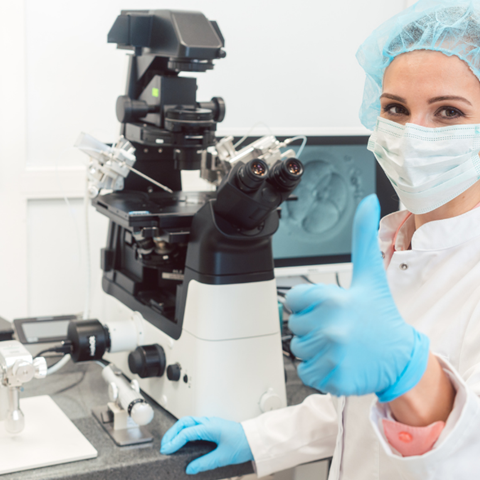When we talk about ovarian or egg reserve, we are talking about the number of eggs you have left in your body that could potentially be used to create a successful pregnancy.

Although you were born having 1-2 million potential eggs in ovarian follicles, by the time you reach puberty you’ll be left with a store of between 300,000 and 500,000.
You can expect to ovulate between 400 and 500 times in your life, and although, each time, you may only have one egg that ovulates, you can expect to lose over 1,000 follicles - or potential eggs - at each ovulation.
How to measure ovarian reserve
To be able to understand your fertility, we need to estimate the level of your ovarian reserve. There are two good ways we use to measure ovarian reserve –an anti-Müllerian hormone (AMH) test and an antral follicle count (AFC).
Why it's important to have a fertility health check
AMH blood test
AMH is a protein hormone that’s produced by special cells inside your follicles. AMH levels in the blood help us to estimate the total number of follicles inside the ovaries, and from there calculate your total egg count. AMH levels stay constant throughout your menstrual cycle, so a simple blood test can be taken at any time during the month.
A typical AMH level for a fertile woman is greater than 16.2 pmol/L, under 4.9 pmol/L is considered very low and indicative of a reduced ovarian reserve.
Healthy AMH ranges by age
The reference intervals below are derived from a population of apparently healthy women not taking any contraceptive medication. The reference intervals represent the 10th – 90th percentile values for the women in each age bracket.
|
Age Range |
Elecsys AMH (pmol/L) |
|
20 – 29 years |
13.1 – 53.8 |
|
30 – 34 years |
6.8 – 47.8 |
|
35 – 39 years |
5.5 – 37.4 |
|
40 – 44 years |
0.7 – 21.2 |
|
45 – 50 years |
0.3 – 14.7 |
AMH gives a good indication of what your reserve looks like on the day of the test. It doesn’t predict whether you might be able to get pregnant naturally in the future, and it doesn’t mean that if your results indicate you have a ‘low egg count’ you can’t get pregnant without help. But it may indicate this might be more difficult for you.
Equally, if you have a ‘normal’ result right now, the levels may not stay the same in the future. Fertility declines with age in all women, and how rapid that decline varies between women and is impossible to predict.
Low AMH levels might mean that the ovaries may not respond well to fertility medications in an egg freezing or IVF cycle, and so higher doses of the stimulation medications might be needed, or multiple stimulation cycles might be required in order to collect a good number of eggs. It may also affect your doctor’s guidance as to whether you are a good candidate for egg collection and freezing.
Exceptionally high AMH levels can be an indicator of polycystic ovarian syndrome (PCOS). If this is the case, lower doses of hormones are usually used to get a good number of eggs without risking over-stimulation. Being more responsive to stimulation hormones puts you more at risk of ovarian hyperstimulation syndrome (OHSS), a risk that needs to be managed very carefully throughout any planned treatment.
Check your AMH levels at home with our fertility test kit
AFC ultrasound scan
Antral follicles are small, fluid-filled sacs inside your ovary, each containing an immature egg. The follicles play a role in maturing the eggs and the release of an egg during ovulation. Only the antral (or mature) follicles are visible to the naked eye, and these can be counted during an ultrasound scan.
The AFC test is one of the best estimates of ovarian reserve, and can also be used to predict how many eggs might be collected during one stimulated cycle. A doctor or technician will conduct the ultrasound scan with a probe, a device that is covered with a condom and gently inserted into your vagina, giving much clearer pictures of your ovaries than an external ultrasound.
The scan is quick and painless, and you’ll be able to see your ovaries on a screen as the follicles are counted. The test can be done at any point during the menstrual cycle, but is most meaningful at the beginning of a cycle. The results of the test can help you understand where you are in the fertility ageing process.
The scan will only show results on that day and estimates your total egg count. Expected levels would be between 4 and 8 follicles per ovary. When an average or high number of follicles (eight or more) can be seen, we’d expect to be able to retrieve a good number of eggs for future use.
How to book Pelvic Ultra Sound Scan
Whatever we learn about your ovarian reserve, all that's needed for pregnancy is one good quality egg to be ovulated – whether you have thousands of eggs or fewer when you are ready to start trying.
Ready to check your ovarian reserve? Book your fertility health check and discuss your results with our fertility experts
Read more

Fertility Health Check
The Fertility Health check includes a personal consultation with a fertility expert, fertility hormone testing, ultrasound, and an individualised plan for your egg freezing treatment.
What is Freeze & Share?
By taking part in our Freeze and Share programme, you’ll receive an egg-freezing cycle plus two years' storage free of charge. In exchange, you'll donate half the eggs collected from your treatment to London Egg Bank.
